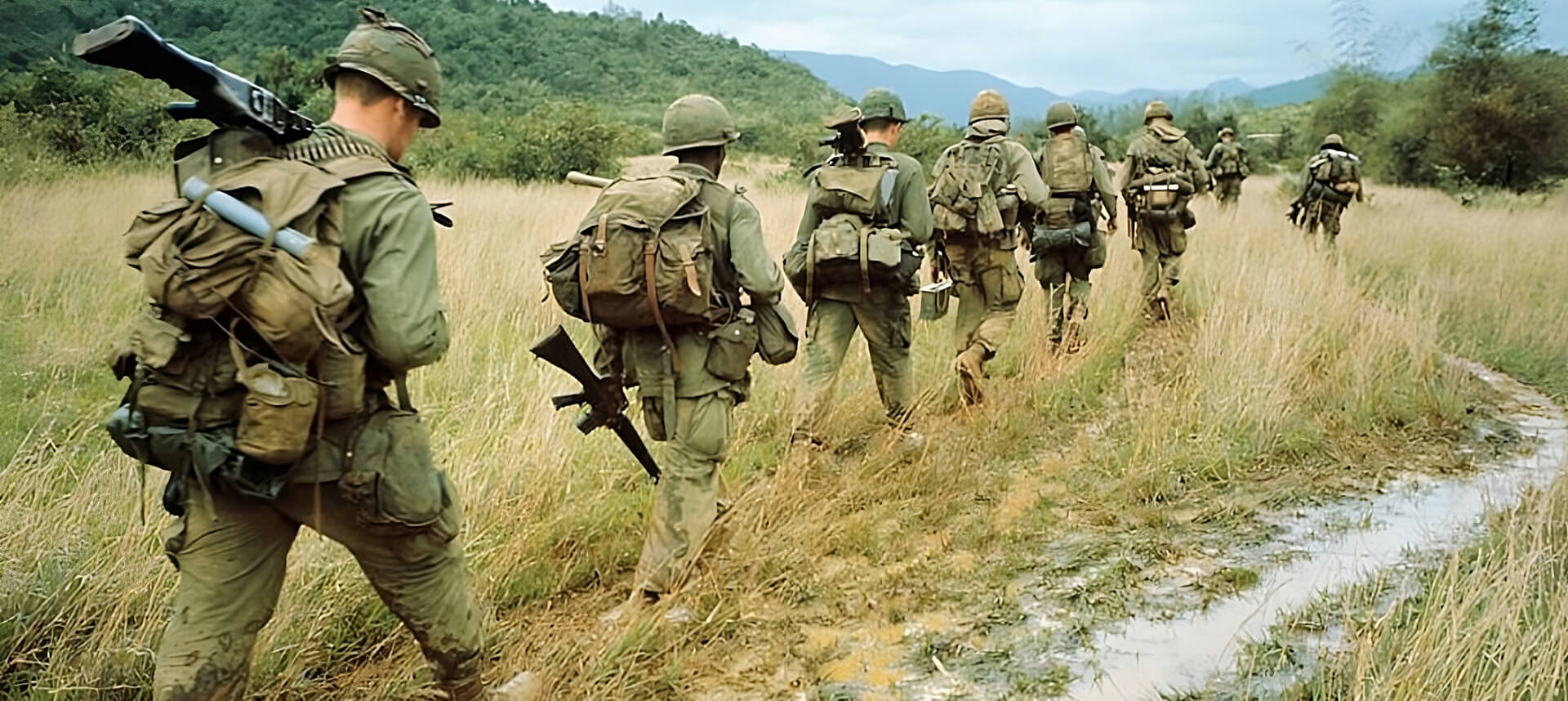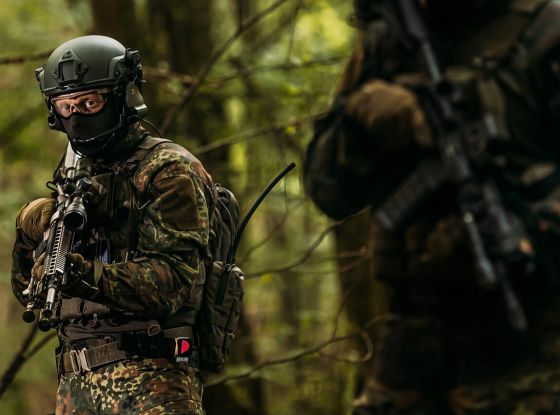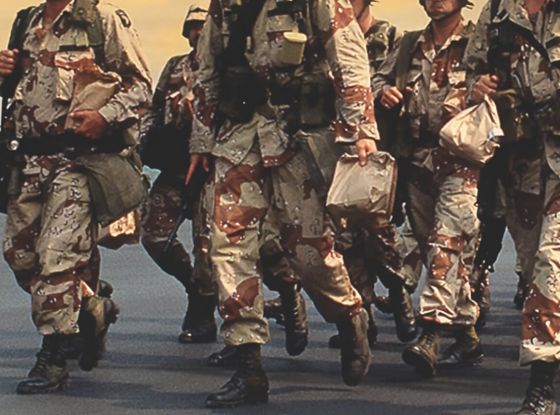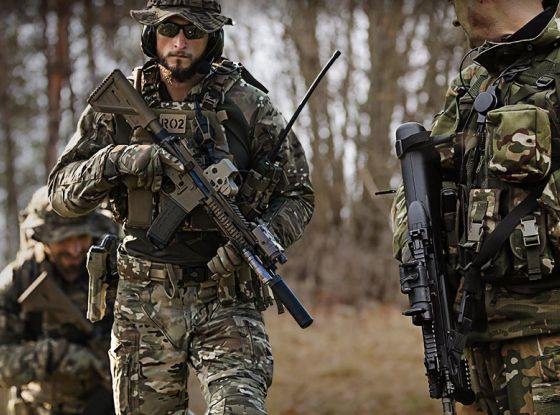Jungle warfare has been a part of human conflict for as long as armies and tropical rainforests have existed. However, one need venture no farther back in time than to the Pacific theatre of World War II and that of the Vietnam War or to even the more recent conflicts in South America and Africa to appreciate that military forces have often been compelled to traverse the treacherous confines of jungle environments. The unique conditions that exist within these environments have necessitated significant modifications in military technology, particularly in the realm of uniform design.
In this blog post:
Introduction
Jungle warfare has always presented unique challenges and demands upon military personnel. From the dense foliage and difficult terrain to the high heat and humidity, these environments required specialised tactics and gear—right down to the military uniforms worn by those deployed to undertake missions inside tropical rainforests. This blog post will explore how changes in jungle warfare impacted uniform design and technology choices—and in particular how products like those from UF PRO have evolved to better support those who operate in such challenging conditions.
The Historical Imperative for Change
Historically speaking, military uniforms worn on jungle missions were not specifically designed for such environments. In many cases, soldiers wore the same garments they would have worn elsewhere. However, because jungles posed unique challenges, uniform designers eventually came to the realisation that these were settings requiring specialised clothing solutions. In particular, uniforms needed to be made more durable to withstand the kind of punishment that the typical jungle—with its harsh and unforgiving terrain—could dish out. Uniforms also needed to be splashed with camouflaged able to blend in better against lush foliage, and to above all be more comfortable to wear in high heat and humidity.
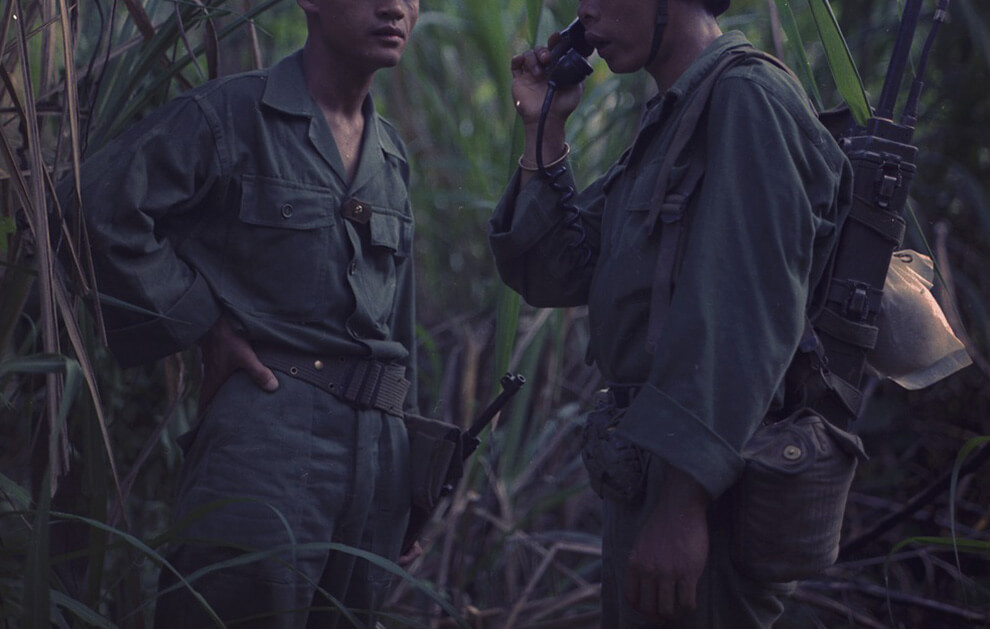
Adapting to the Jungle
The development of more durable materials represented the first major advancement for jungle warfare uniforms. Before these materials emerged, military gear was notoriously prone to ending up in tatters following encounters with any of the various types of flora and fauna found in the jungle. Not so when garments were made of the new breed of materials, like the rugged fabric known as ripstop which quickly acquired a reputation for resistance to splits and tears. Then came special coatings to prolong the life of these materials by adding a layer of water resistance to combat the jungle’s pervasive humidity and frequent rains.
The materials used in modern jungle uniforms have evolved significantly over the years. In the pre-modern era, uniforms used in tropical rainforests were typically made of heavy cotton or wool, neither of which was particularly well-suited to the jungle’s hot, humid conditions. Worse, these materials were difficult to maintain owing to their propensity to tear and rot.
In recent years, there has been a shift toward using even more advanced materials in jungle uniforms. These materials are often made of synthetic fibres, such as nylon or polyester, which are more durable and better able to wick moisture than are natural fibres, and which are often are treated with special coatings to make them more resistant to water and dirt.
Some of the materials now most commonly used in modern jungle uniforms include:
- Nylon: A strong, lightweight synthetic fibre, nylon is an excellent fabric for the construction of jungle-suitable military uniforms—particularly because it is highly water-resistant and moisture-wicking.
- Polyester: Like nylon, polyester is a sturdy synthetic that weighs little. Polyester fibres are remarkably resistant to abrasion and tearing, which makes this a good choice of material for use in rugged environments.
- Ripstop fabric: A shortcoming of nylon is its susceptibility to tearing when it encounters thorns and other sharp objects. So ripstop was developed to overcome that deficiency. Ripstop is nylon, just woven in a way that makes it very difficult to tear.
- Moisture-wicking fabric: Characteristic of tropical rainforests is their heat and humidity, which together promote heavy sweating—a source of discomfort, especially if the sweat has nowhere to go but remain trapped in the uniform’s fabric. That’s where moisture-wicking fabric comes in. It draws wetness away from the body. This promotes the sensation of dryness, which helps improve comfort. And by pulling away moisture, the wearer also feels cooler. (A great example of this innovation is UF PRO's proprietary 3D mesh technology fabric—unrivalled for the way it wicks moisture and helps wearers stay, dry, cool, and comfortable.)
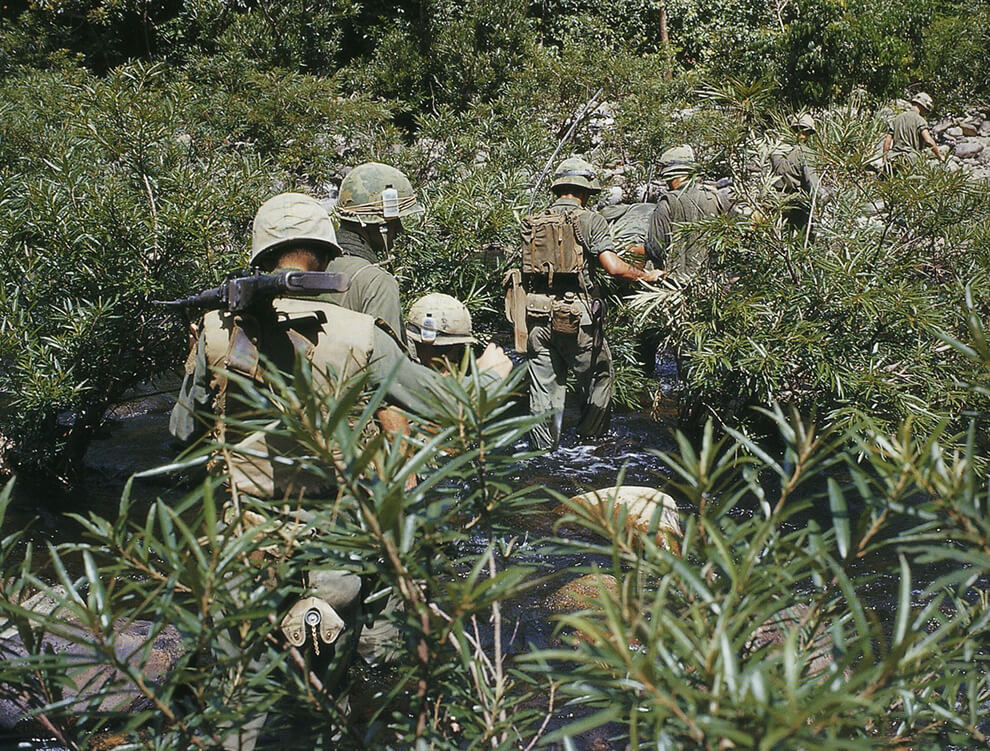
Historical Examples of Uniforms Modified for the Jungle
When it comes to taking a uniform and modifying it for use in jungle warfare, one of the most classic examples is the M1942 Frog Skin pattern. It was used in World War II by the U.S. Marines and was the first American uniform to feature a camouflage pattern intended for operations conducted in the tropical islands of the South Pacific. Unfortunately, the M1942’s green dominant side for jungle environments and brown dominant side for beach environments didn’t prove particularly effective and was eventually replaced.
During the Vietnam War, the U.S. military introduced its Tigerstripe uniform. This camouflage pattern worked better at providing concealment in dense jungles than did any previous design. As well, it was more comfortable than its predecessors thanks to the decision to construct it of lightweight, quick-drying cotton.
In tandem with this came camouflage evolved from traditional woodland and, more recently, digital patterns into more jungle-specific designs. MultiCam® Tropic and A-TACS FG patterns are examples of this evolution. They and others like them are seen as groundbreaking because they embodied a significantly higher level of sophistication in understanding how to design and fabricate military uniforms for environment-specific use.
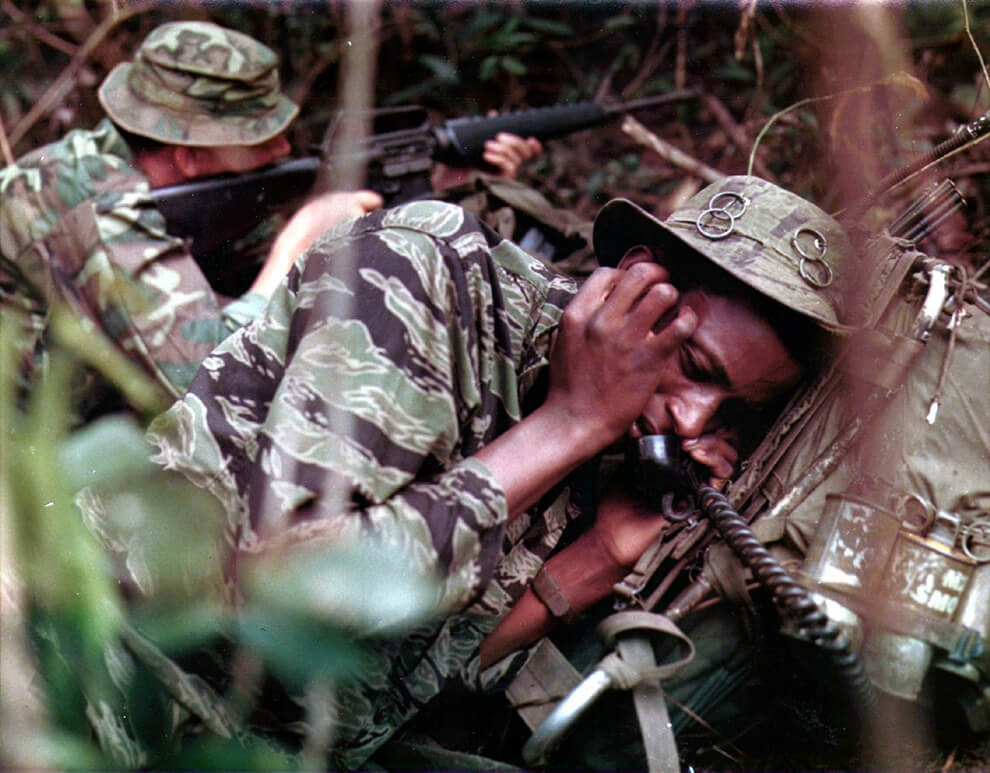
Comfort and Multifunctionality as Keys to Survival
The need to produce jungle uniforms that were every bit as comfortable as they were tactically effective became paramount as designers understood more and more the interplay of those two attributes in tropical settings. Absenting comfort, jungle fighters faced extreme difficulty staying focussed on the mission and on the specific tasks at hand. Absenting tactical effectiveness, they were at great risk of not returning home in one piece—or even alive. Either way, each affected the other and exerted a potentially adverse impact on soldier performance and survivability. It was this realisation that spurred uniform designers to incorporate advanced breathable, lightweight fabrics.
Designers also came to recognise the importance of multifunctionality in the jungle warfare environment. Accordingly, they began building into their uniforms ventilation systems, detachable sleeves, and other innovations such as strategically placed, expandable pockets. These elements served to endow soldiers with greater flexibility to operate successfully in the unpredictable environment of the jungle.
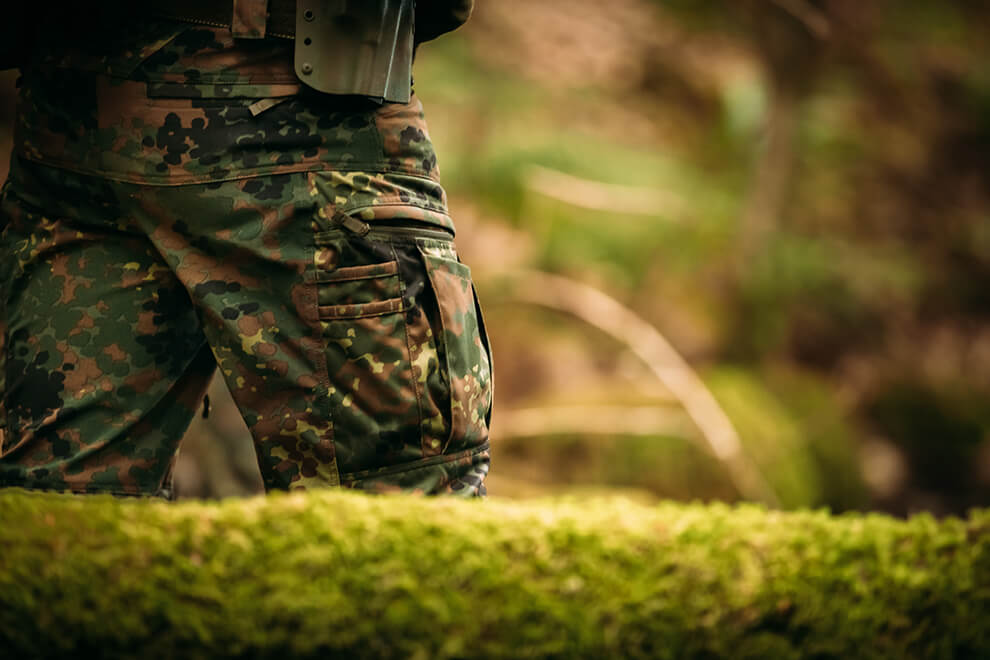
The Future: UF PRO and Beyond
There can be little doubt that the makers of tactical garments will continue to push the boundaries of military uniform design, especially outfits intended for use in tropical rainforests. Expect UF PRO to lead the way. Our products are a testament to the ongoing evolution of uniforms, striking a balance between durability, adaptability, and comfort. UF PRO's use of advanced materials and design techniques exemplifies the industry's commitment to providing military personnel with gear that not only meets but exceeds the demands of jungle warfare.
Take, for instance, UF PRO's Striker HT Combat Pants. They are expressly designed for use in jungles and other high-temperature environments. Made from a blend of polyester and cotton ripstop fabric, Striker HT Combat Pants are exceptionally durable—exactly what is needed to withstand the harsh conditions of the jungle. But what really sets them apart is their advanced moisture-wicking and air-ventilation features: every pair of Striker HT Combat Pants comes equipped with side-mounted, mesh-lined ventilation inlets to promote the degree of breathability required to help soldiers keep their cool in the hot, humid climate of the jungle.
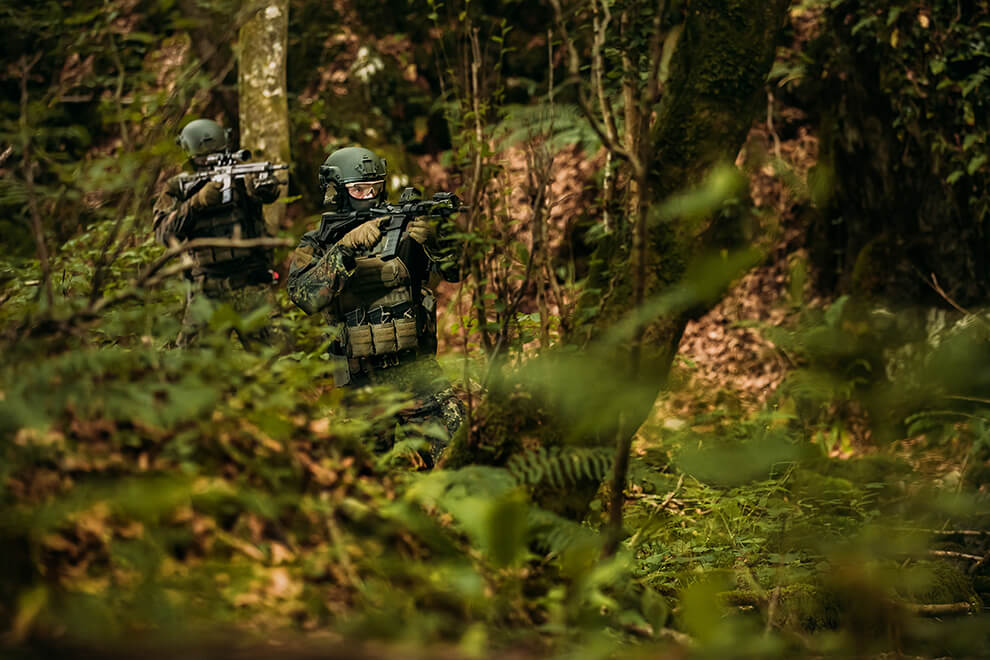
Conclusion
Jungle warfare is nothing new. It dates to the dawn of human history. However, what is new about jungle warfare—or, at least relatively new—are the strategies, tactics, and technologies underlying it. Among the newer technologies are the uniforms worn by those who conduct missions beneath the impenetrable canopy of palm trees and amid the oppressively humid heat that define the environment of the jungle. These defining attributes have driven a remarkable evolution of jungle-specific military uniforms, a parade of innovations that have inexorably led to garments of a more durable, comfortable, and adaptable nature.
We have witnessed among these innovations the introduction of rugged materials and special coatings for durability, the development of jungle-specific camouflage patterns, and the incorporation of breathable, lightweight fabrics for comfort.
Indeed, the jungle is a formidable adversary. However, equipped with the right gear, operators can face these challenges head-on. That is the goal of the makers of today’s jungle-specific military uniforms—to attire soldiers with what they need to get the job done with optimal efficiency, proficiency, and sufficiency. For that reason, military uniforms for use in tropical environments will keep improving, their evolution continuing.

